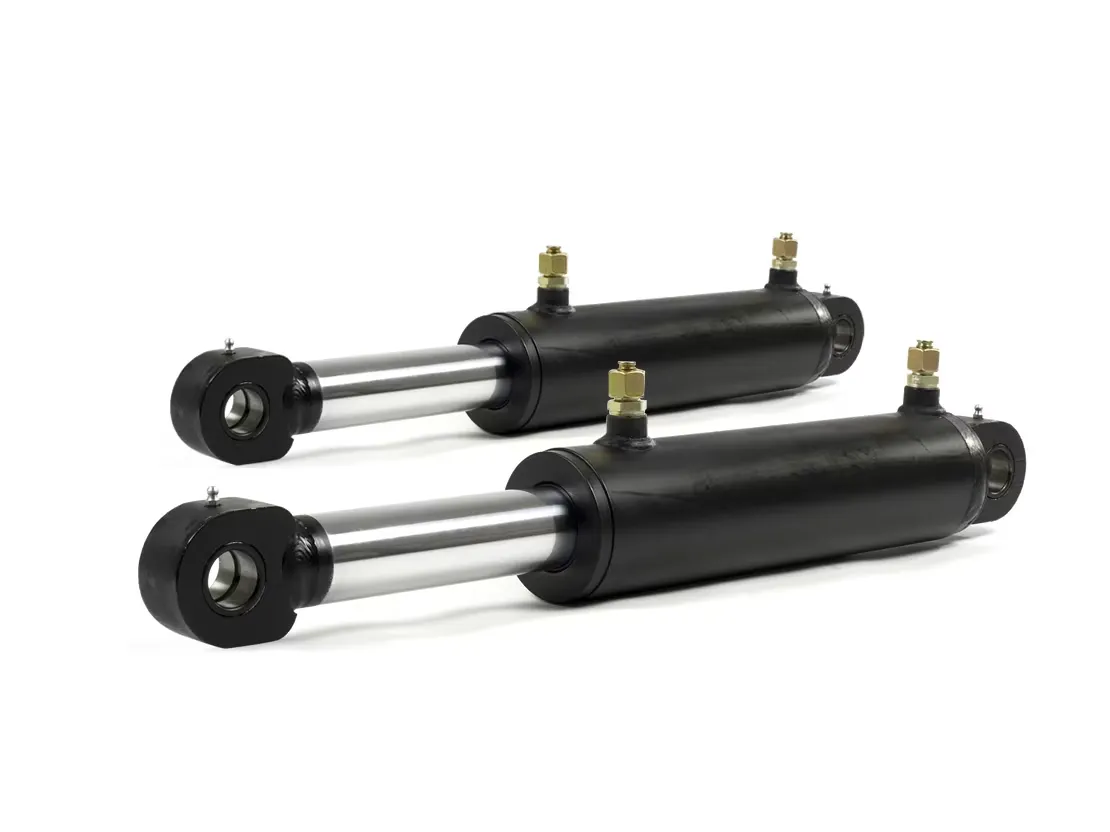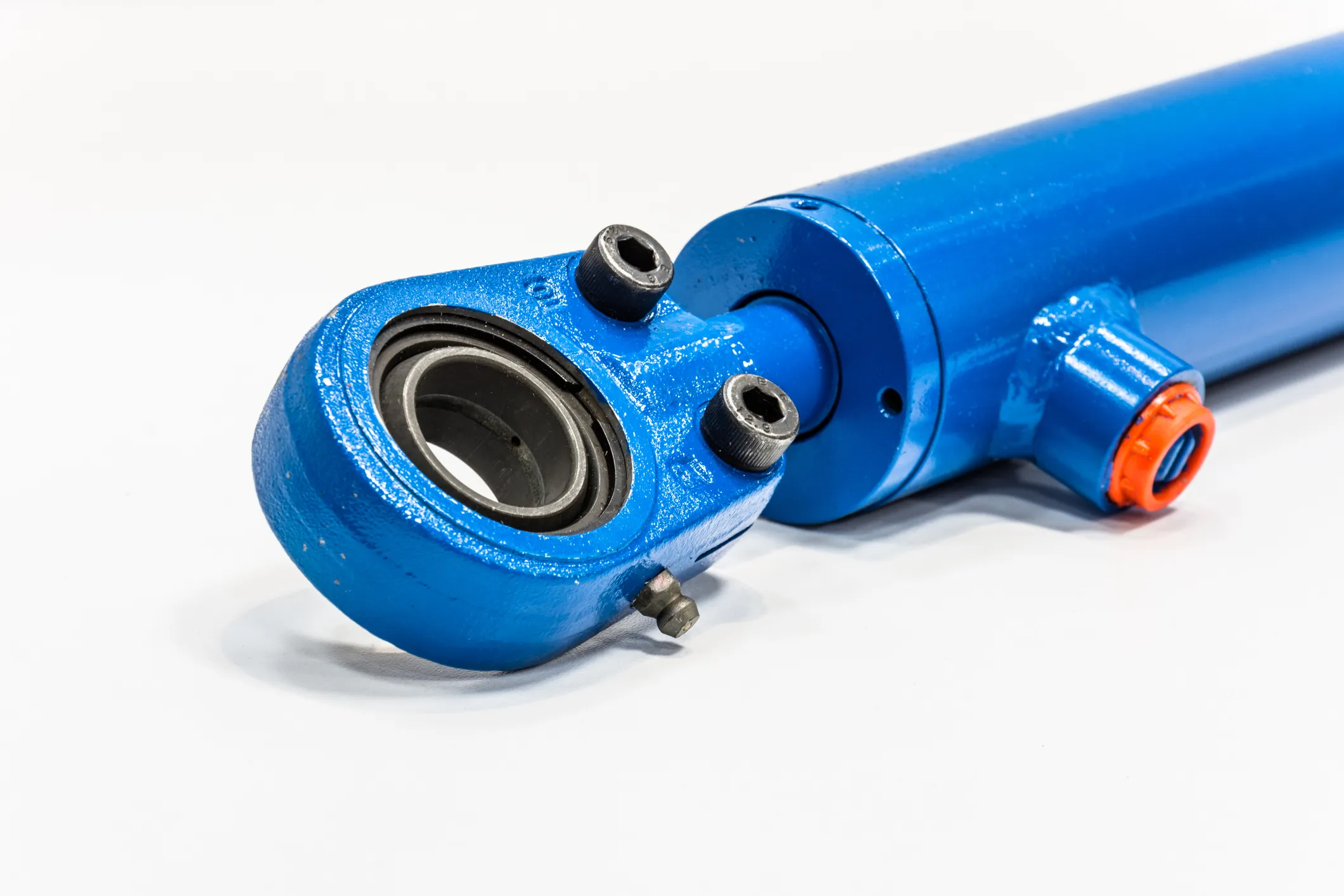Custom Industrial Hydraulic Cylinders: A Comprehensive Guide
Introduction to Hydraulic Cylinders
In the industrial environment, hydraulic cylinders play a crucial role in various applications. These devices convert fluid power into mechanical force, providing a reliable and efficient way to move heavy loads. The key components of a hydraulic cylinder include the barrel, piston, rod, seals, and hydraulic fluid. The structure of a hydraulic cylinder is designed to withstand high pressure and deliver precise motion control.
Control Cylinder Operation Overview
Hydraulic cylinders operate based on the principle of Pascal’s law, which states that pressure exerted anywhere in a confined fluid is transmitted equally in all directions. When hydraulic fluid is pumped into the cylinder, it pushes against the piston, generating linear motion. This controlled movement is essential for applications that require precise positioning and force.
Types of Hydraulic Cylinders
Single Acting Cylinder
A single-acting hydraulic cylinder uses hydraulic pressure to extend the piston, but relies on an external force (spring or gravity) to retract it. This type is commonly used in applications where the load is constantly supported.
Double Acting Cylinder
Double-acting cylinders use hydraulic pressure to extend and retract the piston, providing more control over the movement. They are ideal for applications that require both pushing and pulling forces.

Telescopic Cylinder
Telescopic cylinders consist of nested stages that extend and retract in a telescoping manner. They are used in applications where space is limited and a long stroke is required.
Differential Cylinder
Differential cylinders have different areas on each side of the piston, allowing for different speeds and forces in each direction. They are commonly used in applications where precise control is necessary.
Advantages of Industrial Hydraulic Cylinders
1. High force output for heavy-duty applications, ensuring efficient operation.
2. Precise control over motion, allowing for accurate positioning of loads.
3. Versatility in design and size, catering to various industrial needs.
4. Long service life with proper maintenance, reducing downtime and replacement costs.
5. Smooth and consistent operation, enhancing overall productivity and safety in the workplace.
Industrial Applications of Hydraulic Cylinders
Hydraulic cylinders are widely used in various industries, including manufacturing, construction, mining, agriculture, and more. In manufacturing, hydraulic cylinders are utilized in robotic arms, presses, and assembly lines to facilitate production processes. In construction, these cylinders are essential for heavy machinery, such as excavators and cranes. Mining operations rely on hydraulic cylinders for drilling equipment and material handling. Agriculture benefits from hydraulic cylinders in tractors, harvesters, and irrigation systems, improving efficiency and productivity.
Selecting the Right Hydraulic Cylinder
When choosing an industrial hydraulic cylinder, factors such as load capacity, stroke length, bore size, and operating environment must be considered. Matching the performance of the cylinder to the specific requirements of the application is crucial for optimal functionality and longevity.
Maintenance and Care of Hydraulic Cylinders
Regular maintenance of industrial hydraulic cylinders is essential to ensure reliable performance and extend service life. Inspecting for leaks, lubricating moving parts, and cleaning components are best practices to prevent breakdowns and costly repairs.
Installation Guide for Hydraulic Cylinders
Proper installation of hydraulic cylinders is critical for safe and efficient operation. Following manufacturer guidelines, securing mounting points, and testing for leaks are necessary steps to guarantee functionality.
Maintenance Tasks for Hydraulic Cylinders
Cleaning
Regularly clean the exterior of the cylinder to prevent dirt buildup and contamination of hydraulic fluid, which can affect performance.
Lubrication
Apply the appropriate lubricant to moving parts to reduce friction and wear, ensuring smooth operation and longevity of the cylinder.
Checking Wear
Periodically inspect seals, rods, and other components for signs of wear or damage, replacing any worn parts to prevent malfunctions.
Fault Diagnosis and Common Problems
In the event of hydraulic cylinder issues, common problems may include leaks, insufficient pressure, erratic movement, or failure to extend/retract. Proper diagnosis and troubleshooting are essential to identify and resolve these issues promptly.
Preventive Measures for Hydraulic Cylinders
To minimize potential problems and optimize performance, regular maintenance, correct installation, and proper usage are key preventive measures. Implementing a preventive maintenance schedule can help identify issues early and prevent costly repairs.
Key Factors in Selecting Industrial Hydraulic Cylinders
When choosing the right hydraulic cylinder for an industrial application, factors such as load capacity, stroke length, operating conditions, and environmental factors must be considered. Each of these aspects plays a crucial role in determining the efficiency and reliability of the hydraulic system.
Long-Tail SEO Articles for Industrial Hydraulic Cylinders
1. “Enhancing Industrial Operations with Custom Hydraulic Cylinders”
2. “Optimizing Performance: The Role of Hydraulic Cylinders in Manufacturing”
3. “Efficiency and Precision: Choosing the Right Hydraulic Cylinder for Your Application”
Our Company
We are a leading hydraulic cylinder replacement manufacturer, offering a complete product line for industrial applications. With a focus on quality, innovation, and customer satisfaction, we have established ourselves as a trusted supplier in the domestic and international markets. Our company is dedicated to providing professional services, customized solutions, and reliable products to meet the diverse needs of our clients.
Author: lyl

